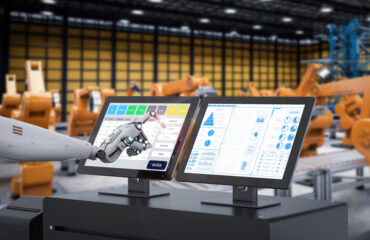
IoT is more than just connecting devices. Using IoT to its full potential can help organizations realize business outcomes instead of just experimenting.
What if it were possible for engineers at a device manufacturer to be automatically notified via remote sensor feedback that one of their devices is failing in the field? And what if those same engineers could immediately connect to the failing device’s testing data from the manufacturing line when it was built? What valuable insights could this reveal? What if the engineer could access field data from throughout the device’s lifecycle and even overlay key service and logistics data from other systems of record? How could this impact product design, manufacturing, and other business areas? If a rich connection between the Internet of Things (IoT) and data analytics can be achieved, this outcome is possible.
Analytics is a key component in unlocking the true potential of IoT. Through data analytics, companies can use IoT strategically to create meaningful business outcomes. Instead of “fulfill and react,” you can “predict and anticipate.” When IoT is done right, you can intervene before a device from failing and reduce the volume of customer service calls. Most organizations usually fall short in that endeavor. These projects can easily get stuck in pilot mode and fail to fully operationalize all the IoT data within their reach.
So what’s keeping data analytics and IoT apart, and how can we bring them together?
The barriers to IoT success
Internal disparity is a reoccurring theme. We see this in the “science fair” approach companies take when building out their IoT operation. Different teams work on their own parts of the project with their own specific requirements and proofs of concepts — all chasing innovation but not in a coordinated way that ties to business outcomes such as operationalization and monetization. Lots of time and energy get expended in experimentation while overlooking the business goals. It becomes IoT for IoT’s sake with no real payoff. Analytics are in play but never in a strategic manner. They stall out at the “fulfill and react” phase. Moving into the “predict and anticipate” phase is where IoT starts to make a difference.
In the course of standing up an IoT platform, data typically never strays too far from its source. While some data silos get broken down in this process, it’s very easy to replicate or create new ones in their place. For a fully-realized IoT operation, leaders must make a concerted effort to share data widely and in real time. In silos, you risk making rich data redundant and duplicating efforts across teams. The resulting bottlenecks prevent quick actions. Data are your eyes and ears in IoT; without it, you’re just working in the dark.
Lastly, adopting an IoT operation is no small feat. It’s a highly complex form of technology that must adapt and change over time. Not many organizations have the technical expertise to build a platform, much less take on the burden of maintaining and evolving it after it’s built. For analytics alone, a dedicated group of data scientists is required to extract and maximize value from the vast amounts of data that your IoT-connected devices will collect.
Weaving the digital thread
The best way to prioritize data in your IoT operation is by creating a digital thread. This is a common through-line running across your organization. It connects products, systems, people, customers, and partners. Data can easily travel this line for easy access by all parties. You can prioritize different data sets in the thread, interconnect any silos, and funnel information into a central, more manageable point of control.
For example, a digital thread can weave the entire end-to-end lifecycle of a product. It incorporates data produced from each stage — including design, manufacturing, shipment, in-field use, maintenance, and decommissioning. The data lives in an extensive closed-loop that is ripe for mining. Once you have the right data in the right place, you can then, for example, derive predictive insights to improve the product lifecycle in new ways. It’s the data-driven insight you can trust and act upon to achieve business outcomes.
Weaving this digital thread through your organization requires the following:
- Top buy-in, which leads to bottom buy-in – A digital thread is an enormous business transformation, and its success requires dedicated sponsorship from the executive level. Get their buy-in as soon as possible and show them early achievements to get them on board. With the C-suite’s visible and active executive sponsorship of the project, the wider company is more likely to support it and shift behaviors to make it successful. The pieces of your organization will jell more naturally. Otherwise, expect resistance at working levels.
- Clear buy-in from business units— Just as important as getting buy-in from the top is getting buy-in from the lines of business, especially on the technical side. This establishes business-led use cases that will facilitate a “pull” mechanism that can work in tandem with the “push” mechanism led by centralized organizations, such as IT. Otherwise, centralized frustration is likely to occur, and no substantial business outcomes will be achieved.
- Empowering a culture of data science within your organization – Create a dedicated data analytics team tasked with unlocking data-driven insights across your organization. Composed of data scientists and other high-end data users, this team will form your “data heroes,” who will have the expertise to wrangle data and know what to do with it. Otherwise, even if lines of business are looking to “pull” data, it could be technically beyond their means.
- Clean, automated data flow – Automate the process of turning data into insight. Reduce or eliminate manual processes for lines of business to engage. Work closely with subject matter experts to ensure data is clean and even annotated so that barriers to business adoption are minimized. Otherwise, internal data consumers are unsure what data to select and will also lose confidence in its integrity.
IoT is more than just connecting devices. Data and people must also be linked to work in unison. Once all the pieces are fitted together, you can use IoT to its full potential, realizing business outcomes instead of just experimenting.





























